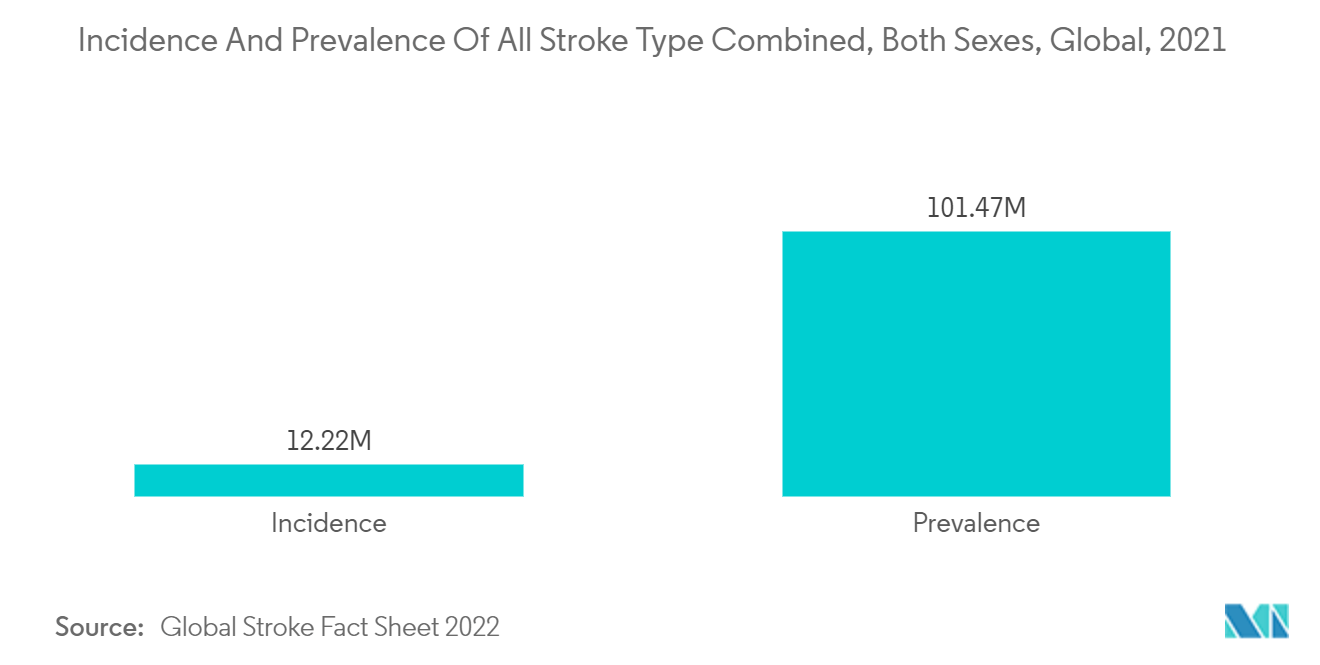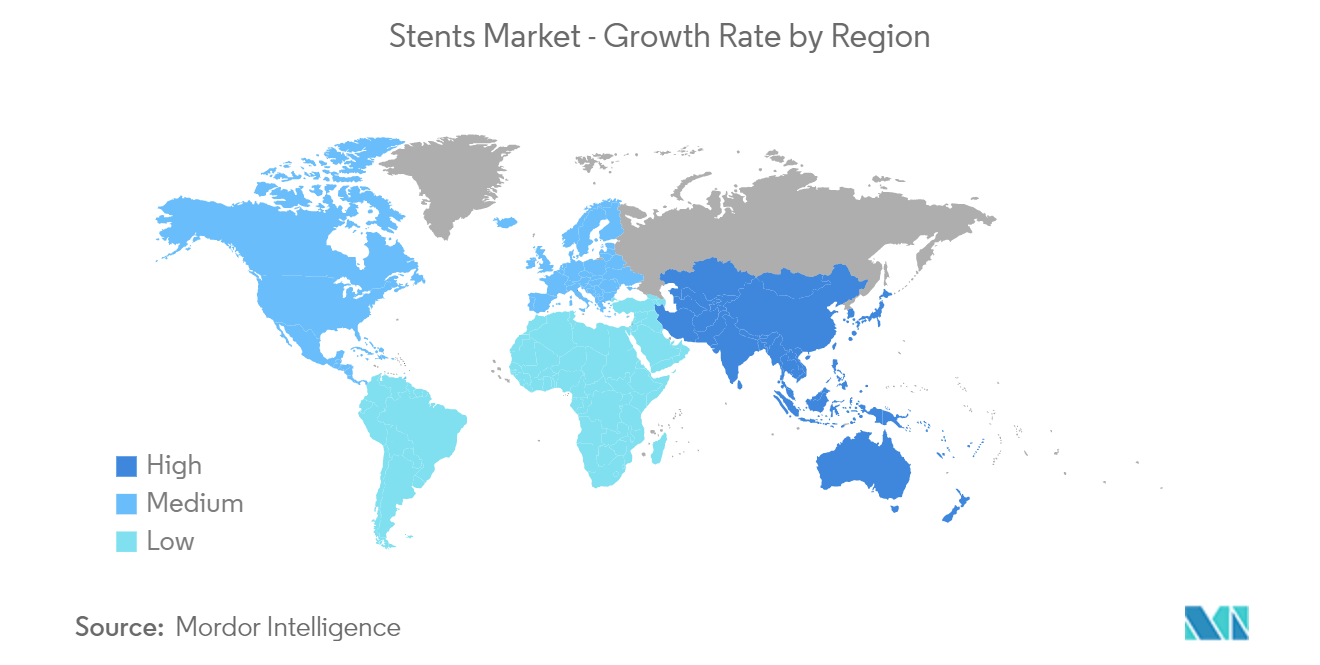Market Trends of Stents Industry
The Drug-eluting Stents Segment is Expected to Witness Significant Growth During the Forecast period
A drug-eluting stent is a peripheral or coronary stent inserted into clogged, diseased peripheral or coronary arteries, slowly releasing a drug to block cell proliferation.
Due to the increased number of cardiac disorders, there is an increased demand for coronary stents worldwide. According to the data updated by the CDC in October 2022, coronary heart disease was the most common type of heart disease in the United States. The high prevalence of cardiac diseases among the population reaped the demand for stents.
Furthermore, the advantages offered by drug-eluting stents are a major factor driving the segment's growth. For instance, according to an article published by PubMed Central in July 2021, the drug-eluting stent (DES) is considered superior to bare-metal stents as re-stenosis occurs at a lesser rate in DES. This can be due to the longer duration of dual antiplatelet therapy use in DES versus bare-metal-stent.
The advancements in technology, increasing product approvals, and partnerships and acquisitions by key players are driving the segment's growth. For instance, in January 2022, Cook Medical received a breakthrough device designation from the United States FDA on a new drug-eluting stent below the knee (BTK). This novel stent is used to treat individuals with limb-threatening persistent ischemia. Furthermore, in August 2021, Sinomed launched its HT Supreme drug-eluting stent in Ireland. Such launches are projected to augment the segment's growth during the forecast period.
Therefore, due to the factors above, such as the rising prevalence of heart disorders, increasing advantages of drug-eluting stents, advancements in technology, increasing product approvals, and partnerships and acquisitions by key players, the studied segment is expected to experience growth.

North America is Expected to Dominate the Stents Market During the Forecast Period
North America is expected to dominate the market owing to factors such as the rising incidence of chronic diseases, the growing geriatric population, the strong presence of industry players in the region, better healthcare infrastructure, and increased awareness among people and healthcare industry stakeholders about available technologies.
In addition, the rise in the geriatric population and the increase in the incidence of lifestyle diseases are actively affecting the market's growth. For instance, according to the Statistics Canada 2021 census, there were around 7,021,430 people aged 65 years or above in 2021, of which 3,224,680 were males and 3,796,750 were females. The geriatric population is prone to critical cardiovascular diseases that require stents for treatment. Thus, the surge in the geriatric population in the region is likely to augment the market's growth.
The engagement of key market players and institutions in research and development in the region for innovation in the stents used for different conditions is projected to augment the market's growth. For instance, in October 2021, Boston Scientific Corporation presented positive clinical trial results for the Eluvia drug-eluting vascular stent system during a clinical trial presentation at the Vascular InterVentional Advances (VIVA) meeting in Las Vegas. According to the data from the EMINENT trial, the Eluvia stent outperformed self-expanding bare metal stents (BMS) for the treatment of patients with peripheral arterial disease (PAD) and superficial femoral artery (SFA) lesions up to 210 mm in length. The study included 775 patients, making it one of the biggest drug-eluting stent randomized trials for peripheral artery disease treatment to date. Such clinical trials are anticipated to fuel the use of stents in the region.
Therefore, owing to the abovementioned factors, such as the rising geriatric population and engagement of key market players and institutions in research and development in the region for innovation in the stents used for different conditions, the market studied is anticipated to grow in the North American region.


